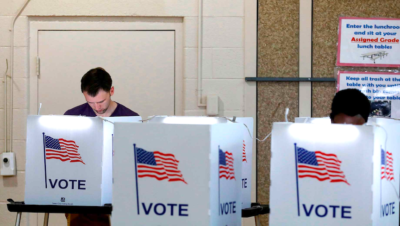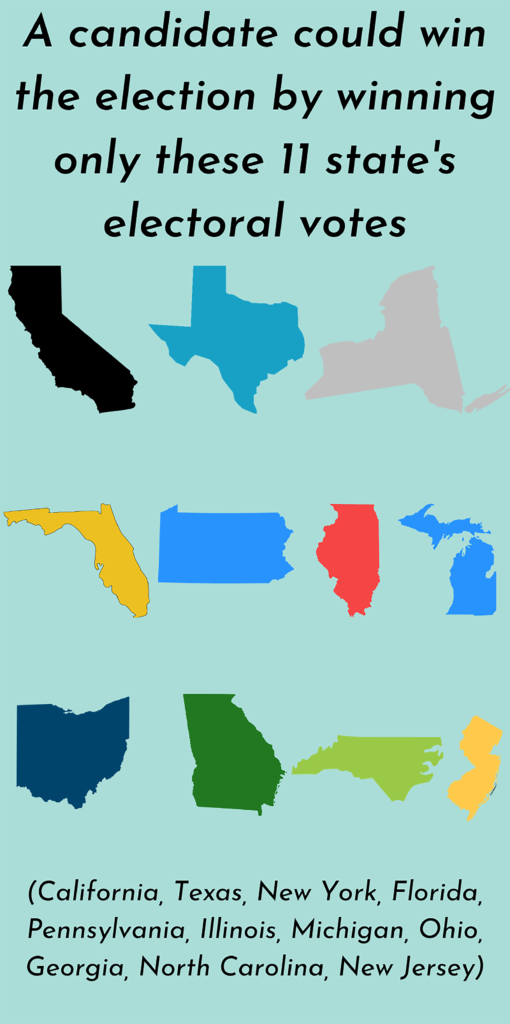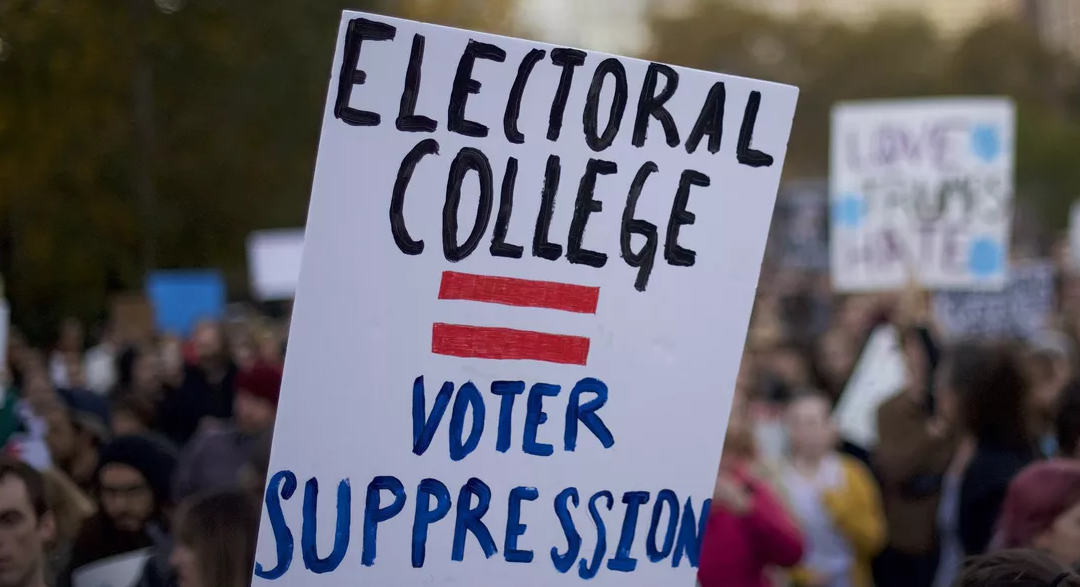By Andrew P., Charlie G., and Michael S.
The Electoral College is a system our country has always used to elect our president, but what is it, and is it still useful for our country? When the Constitution was drafted in 1787, the framers needed a system to elect the president. One group of delegates wanted the president to be elected through a popular vote (the votes cast by citizens), while other delegates wanted Congress to decide the election. They then made a compromise, and the Electoral College was formed.
The Electoral College is a group of people chosen by state legislatures to vote for the president and vice president. The number of electors in each state is equal to the number of members each state has in Congress. There are currently 538 electors, (535 for the number of representatives in Congress, plus 3 electors who represent Washington, D.C.). 270 electoral votes are required to win the presidential election, regardless of who wins the popular vote.
Despite individual Americans casting our ballots for who we want to be president, the only votes that count are those of the Electoral College.
Electoral Votes can override the popular vote, basically rendering citizens’ votes useless. An example of a candidate losing the popular vote while winning the presidency was the 2016 election. Hillary Clinton won the popular vote with 65,845,063 votes, which was 2,868,691 votes more than the 62,980,160 of popular votes cast for Trump. However, she lost the election due to having 227 electoral votes to Trump’s 304.

“So, according to what the framers wanted, the Electoral College casts votes based on who we are voting for. That means it’s okay that the president isn’t elected through the popular vote, but that my vote still has some impact, right?”
Well, not necessarily. One flaw of the Electoral College is something called “faithless electors.” Faithless electors are electors who will vote for who they want to be president regardless of the popular vote. There are around 30 states that require their electors to vote for the candidate who wins the popular vote, but there are still about 20 states that don’t have any laws restricting electors. If you were voting in a state with a faithless elector, your vote could essentially not count.
Click here for more information on faithless electors.
Another factor that could make your vote even less impactful is living in a more populated state. For example, in Wyoming, there are 578,000 people and three electoral votes, which is equivalent to one electoral vote for every 190,000 voters. However, in California, there are about 40 million people and fifty-five electoral votes, which is equivalent to one for every 700,000 voters.
This means that the votes of people in Wyoming are about 3.5 times as impactful as those in California.
There is yet another, if not the biggest flaw: In 48 of the 50 states, electoral votes are controlled through something called the “winner-take-all” system. In winner-take-all states, only one candidate gets all of all of the electoral votes for that state. For example, in California, if candidate X gets 45 electoral votes, and candidate Y gets 10 electoral votes, all 55 votes go to candidate X–even though people represented by the 10 electors voted for candidate Y.
As a result of the winner-take-all system, a presidential candidate could hypothetically win an election by winning only 11 states.

With all of these flaws in the Electoral College system, what can be done about it?
One obvious solution would be to completely get rid of the Electoral College. Abolishing the Electoral College would require amending the Constitution, which is a very long and complicated process. First, when an idea has enough popular support, a member of Congress brings it to the floor of either the House or the Senate. The chamber of Congress the idea was introduced in assigns a committee to debate and refine the idea. If the idea makes it out of the committee, the full chamber will debate. For the amendment to proceed, two-thirds of the chamber it was introduced in has to vote for it. The process will be repeated in the other chamber. If two-thirds of congress votes for the amendment, the amendment gets sent to every state. Once 3/4 of the states ratify it, the amendment finally passes. The Constitution has only been amended 27 times since it went into effect in 1789.
An easier solution to the Electoral College problem would be to just remove the winner-take-all system. This would require individual state legislatures to change their laws. Getting rid of the winner-take-all system means that candidates would receive any electoral votes cast for them cast for them, regardless of whether or not they won the majority of electoral votes of electoral votes from that state. A solution like this wouldn’t have to go through the Constitutional amendment process; the states would have it to do themselves. This would be faster, and would be a step towards making everyone’s votes count.
You can do your part in repairing a flawed system by sending messages that encourage electoral reform to your representative in Congress, and by bringing attention to this issue by telling friends and family.
We support the Brennan Center for Justice who is advocating for the Electoral College to be reformed, and we recommend you visit their website for more information on the issue of the Electoral College system.

